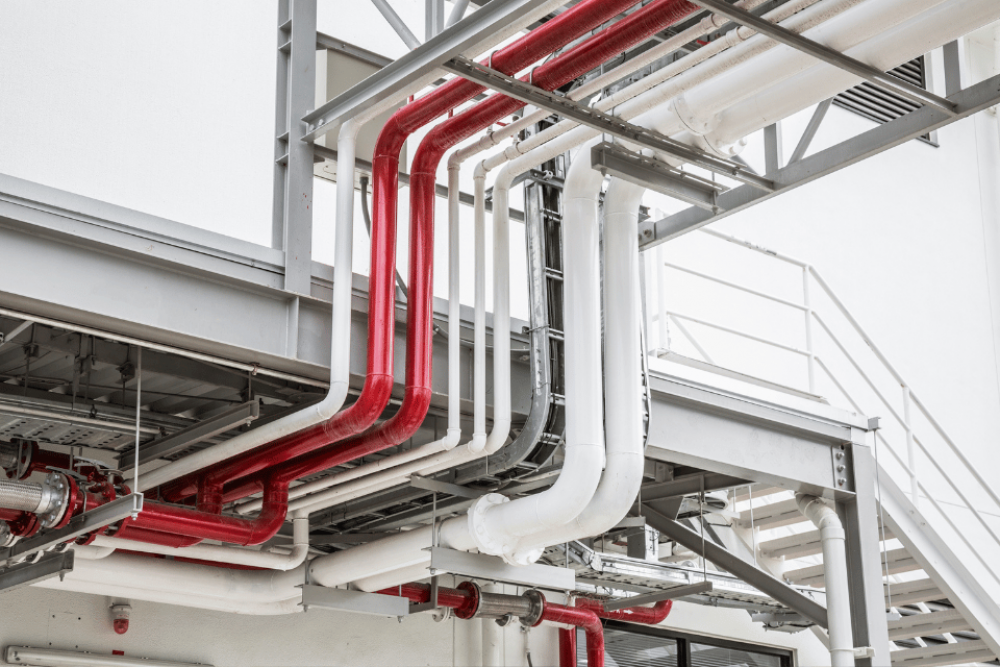
How to Address Drainage Issues in Commercial Plumbing?
Drainage issues in commercial plumbing can present significant challenges due to the complexity and scale of the systems involved. Unlike residential systems, commercial plumbing often handles a much higher volume of waste and water, which can lead to various types of drainage problems. Common issues include slow drainage, frequent clogs, and backups, which can disrupt daily operations and affect business efficiency. We will explore the common causes of these problems, from grease buildup in kitchens to the accumulation of debris in pipes, and discuss methods to address and prevent them effectively.
Routine Maintenance and Inspections
Routine maintenance and inspections from Evolution Plumbing and Misting near Gilbert prevent drainage problems in commercial plumbing systems. Regular inspections allow for the early detection of issues such as pipe deterioration or blockages that could lead to more severe problems if left unaddressed. Maintenance tasks should include cleaning drain lines, checking for leaks, and inspecting grease traps and sump pumps. Implementing a scheduled maintenance plan ensures that potential issues are identified and resolved before they can escalate into significant disruptions. Regular maintenance also helps extend the plumbing system's lifespan and ensures it operates efficiently.
Implementing Effective Drainage Solutions
Implementing effective drainage solutions is essential to address and prevent drainage issues in commercial plumbing. One common solution is the installation of high-quality drain covers and screens to catch debris and prevent it from entering the drainage system. Additionally, installing grease interceptors in commercial kitchens helps manage grease and oil, which can otherwise clog pipes and drains. For larger commercial spaces, it might be necessary to use advanced drainage systems that can efficiently handle higher volumes of waste and water. Ensuring that the drainage system is designed correctly and maintained can help minimize the risk of drainage problems.
Dealing with Clogs and Blockages
Clogs and blockages are common commercial plumbing issues requiring prompt attention to prevent significant disruptions. When dealing with clogs, it is essential to use appropriate methods for clearing them, such as plumbing snakes or hydro-jetting. Plumbing snakes can help remove blockages caused by hair, paper, or other debris, while hydro-jetting uses high-pressure water to clear more stubborn obstructions. In cases where traditional methods are ineffective, it may be necessary to use video inspection technology to locate and diagnose the problem accurately. Timely and effectively removing clogs can help restore normal flow and prevent issues.
Preventing Future Drainage Issues
Preventing future drainage issues involves adopting practices that minimize the risk of recurring problems. Educating employees about proper disposal practices, such as avoiding flushing non-disposable items or pouring grease down the sink, is crucial. A regular cleaning schedule for drains and grease traps can also help prevent buildups that lead to blockages. Additionally, installing backflow preventers can protect against potential backups and water supply contamination. By fostering a culture of proper maintenance and responsible usage, businesses can reduce the likelihood of drainage issues and maintain a smoothly operating plumbing system.
Handling Emergency Drainage Situations
Emergency drainage situations in commercial settings can arise unexpectedly and require immediate attention to prevent further damage and disruption. Common emergency issues include severe blockages, pipe bursts, or extensive leaks that can quickly escalate if not addressed promptly. When faced with an emergency, it is crucial to have a plan in place, including access to emergency plumbing services that can respond quickly. Sometimes, shutting off the main water supply and containing the area to prevent water damage can be necessary until professional help arrives. A reliable emergency response plan ensures that critical issues are managed effectively, minimizing downtime and damage to the property.
Utilizing Advanced Technology for Drainage Management
Incorporating advanced technology into drainage management can significantly enhance the ability to address and prevent plumbing issues. Technologies such as video inspection systems allow for precise diagnosis of drainage problems by providing real-time visuals of the interior of pipes. This method helps identify the location and nature of blockages or damage, leading to more effective and targeted solutions. Additionally, automated monitoring systems can track the plumbing system's performance and alert maintenance teams to potential issues before they become serious problems. By leveraging these advanced tools, businesses can improve their ability to efficiently manage and maintain their drainage systems.
Ensuring Compliance with Regulations and Standards
Compliance with plumbing regulations and standards is essential for maintaining the integrity and safety of commercial drainage systems. Local building codes and health regulations often set specific requirements for plumbing systems, including materials, design, and maintenance practices. Ensuring that your commercial plumbing system adheres to these regulations helps prevent legal issues and allows the system to operate efficiently and safely. Regular audits and consultations with professionals familiar with local codes can help you stay compliant and address potential problems. Adhering to these standards contributes to the overall reliability and functionality of the plumbing system, protecting the business and its operations.
Addressing drainage issues in commercial plumbing requires a comprehensive approach that includes routine maintenance, effective drainage solutions, and proactive prevention strategies. By understanding the common causes of drainage problems and implementing appropriate measures, businesses can minimize disruptions and ensure their plumbing systems function efficiently. Regular inspections, proper maintenance practices, and employee education are critical components in effectively managing and preventing drainage issues.

